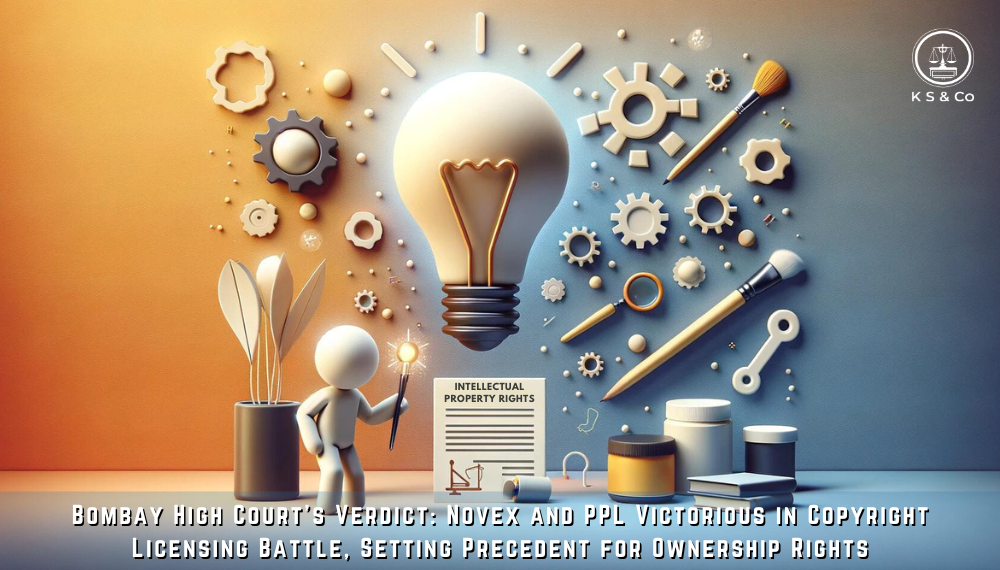
By K Singhania & Co | January 9, 2018
Published in
THE ORDEAL OF INTERNATIONAL BRAND
Well Known Mark:
The Trade Marks Rules, 2017, has -implemented certain significant changes in the procedural aspect of declaring a trademark to be a well-known mark by way of filing a request before the Trade Marks Registry alongwith supported documents in the form of statement of case and an official fee of INR One hundred thousand ( One Lakh). The Office of Controller General of Patents, Designs and Trade Marks (CGPDTM) has also issued notifications elucidating the process of submitting the evidences showing the use of trademark, existing and potential customers for goods/services available under trademark, the duration, extent and geographical area of use of the mark, judicial pronouncements wherein trademark declared to be well known etc. There was no procedure for determining the well-known mark, though there were instances whereby trademarks were declared well-known during infringement/passing off proceedings or in opposition/rectification proceedings etc. With the advent of new rules it now obligates the Trademark Registry to provide an extraordinary protection to the well known trademarks and safeguards them from the vices of infringement and passing off. –
The well-known trademark as defined under Section 2(1) (zg) of the Trade Marks Act, 1999 provides- “well-known trademark, in relation to any goods or services, means a mark which has become so to the substantial segment of the public which uses such goods or services that the use of such mark in relation to other goods or services would be likely to be taken as indicating a connection in the course of trade or rendering of services between those goods or services and a person using the mark in relation to the first-mentioned goods or services.”
The aforesaid section was reiterated in the case of Rolex Sa vs. Alex Jewellery Pvt. Ltd. & Ors. CS (OS) 41/2008. In the present case, the Plaintiff brought an action against the Defendant so as to restrain them from dealing in artificial jewellery and any other such products under the trade name of Rolex, wherein the Hon’ble Court was of the view that since a segment of the public uses the watch of the particular category/price range as watches of the Plaintiff may believe that the artificial jewellery also has the connection with the plaintiff Rolex – as a well known trademark. The Court upon consideration of the Sec 11 (6) i.e. the duration, extent and geographical area of use of the mark opined that upon testing the trademark of the Plaintiff on the touchstone of the ingredients of the aforesaid provision of the act, the plaintiff –was successful in the test of well-known trademark.
The Delhi High Court in a landmark decision being rendered in the case of Champagne Moet and Chandon vs. Union of India & Ors., W.P. (C) 9778 of 2006, was pleased to dismiss the appeal of Moet and Chandon as preferred against the order passed by Intellectual Property Appellate Board (IPAB). Wherein the Hon’ble Court has observed that the Appellant company is a well-known manufacturer of wines and are selling the same under the trademark ‘Moet & Chandon’ and the Respondent M/s. Moet is a partnership firm dealing in meat, fish, poultry and meat extracts. The respondent earlier applied for the registration of mark Moet’s under Class 29 for the fish, poultry and meat products and16 in respect of paper and paper products which was opposed by Appellant but the said oppositions was dismissed by both the Deputy Registrar and IPAB. The wine manufacturer contented that adoption of mark was fraudulent and dishonest as they copied the essential features of Appellant’s trademark. Further, contended that both are table products thereby the trade channel was common and that Respondent had not commercially sold any products under Class 16. The Respondent in this manner pointed out that Section 12(3) of the Trademark Act permitted the Registrar to grant registration in favor of more than one proprietor if there was honest and concurrent use of identical marks in relation to the same goods.
The Deputy Registrar concluded that the Respondent had furnished invoices and other correspondences while the Appellant-has failed to produce any satisfactory evidence to that effect of prior use and marketing. The IPAB also found that there was absolutely no evidence or material on record to establish that the products are openly available in the market in India which alone would establish the goodwill/well known mark of Appellant in the trade. The Hon’ble Court in this regard opined that it is not tenable in law that a dishonest adoption of mark would not entitle the Respondent to raise the defence of acquiescence. Thus the High Court found no reason to interfere with the impugned order passed by the IPAB. The decisions were based on the ground of prior usage of the trademark in India and no other issues pertaining to the goodwill and reputation in international markets were considered which impose duty on the Courts to include the evidence produced before and the material information in this regard before rendering such decision.
Prior to the formulation of statutory provisions for the protection of well known trademarks, the Court used to follow the common law principles like passing off and injunctions. In the – the case of Whirlpool Co. & Anr. vs. N.R. Dongre, 1995 (32) DRJ 318, -The Hon’ble Court was pleased to grant an injunction to the Plaintiff i.e. Whirlpool as against the Defendant – The dispute arose as Whirlpool had not registered their trademark in India but by virtue of use and advertisements in International magazines had a worldwide reputation and used to sell their machines in the US embassy in India. Meanwhile, the Defendants started using the impugned mark on its washing machine against which action was brought before the Hon’bleCourt and it was held that the plaintiff had established ‘transborder reputation’ in India and thereby Defendants were injuncted from using the same mark for their products. This judgment inculcates the aspect where the international mark was granted recognition not on the basis of prior usage but the goodwill and reputation in the international market and the acknowledgment of such mark among consumers.
Further, in another such instance, the international chain of hotels and resorts, Hilton International, lost trademark infringement case before the Hon’ble Supreme Court thereby losing the exclusive right to operate under ‘Hilton’ trademark in India. The Court ruled in ‘Hiltone’, the Rajasthan based hotel group should have exclusive rights to the trademark as it had been registered earlier. Hilton Int. filed SLP challenging order of the Hon’ble High Court but the petition was denied. The Hilton’s reputation as a world famous brand was undisputable but the District Judge without assessing the evidence passed the order on grounds that Plaintiff were using the mark ‘Hilltone’ since 1973 and the Defendants were not operational in India prior to this date. The right to use trademark is associated with its actual use, which would be decided by the Rajasthan High Court on merits. The District Court’s decision needs to be revised as the suit was filed on groundless threats of trademark infringement whereby the Hilton International Group was restrained from using its own registered trademarks. This order proved absurd as Hilton can continue to use its trademarks until such time that they are revoked by the IPAB or the Registrar of the trademarks.
The intellectual property regime has undergone rapid changes in the past few years leading to greater awareness amongst the legal community and courts, proving to be a significant aspect in the economic development. The evolving jurisprudence reveals that the Courts are vigilant in adopting the doctrinaire approach while considering the remedies in law and balancing the rights of the innovators. There has been trend in the judiciary of recognizing that the evolution of technology also means that IP rights are increasingly susceptible to various kinds of infringement beyond those traditionally recognized. Thereby to deal with these sorts of infringements, Courts have granted remedies varying to grant of ex-parte injunctions, awarding interim royalties etc, and pursuant to the enactment of the statutory provisions for protection of the well known trademarks, the Courts have been able to protect the marks from infringement and passing off successfully by invoking the aforesaid provisions.
The recent judicial pronouncements depict- that the Courts have failed to appreciate the concept of well-known mark while adopting the legislative measures for interpretation. The introduction of such concept in the legislation was to ensure that the consumers should not be deceived by the Indian traders/manufacturers by use of well known mark like Rolex in other products which the brand Rolex does not make – at all. Therefore, to test the applicability of trademark only on the basis of prior use is not apt as in the case of Moet and Chandon, the Court failed to consider that through media and international magazines in circulation, the Indian consumers are made aware about a particular brand. It is for the protection of the Indian consumers that they should not be misled by the use of the local product which is not having any connection – to the mark of a – well known company.
Further, as far as considering any Trademarks/ a well known mark, the Courts ought to take judicial notice to the fact that there has been a ban on the advertisement of products like liquor which results in no such awareness about brand in the Indian market. The Judiciary has to take into consideration that by encouraging more international investors, India has become a part of the International community; thereby it obligates the Courts to give true meaning and effect to the well known trademarks and further the Courts be flexible enough while interpreting the laws relating to the well known trademarks.
The Courts ought to be pragmatic while giving credence to the international character of trademarks and recognizing their well-known status. The renowned brands need to be enlisted under the well-known marks to explore the emerging market destinations but the practical ramification underline that brand is required to wait for the Courts’ decision where an infringement case is involved. While deciding upon the cases of well known mark, the Courts are seen favoring the local brands without even considering the evidence on record and the material facts and issues. The role of Courts in shaping the path of IPR law is of significant importance which ought not to be tainted for reason of preferential treatment while protecting interests of local trademark holders as protection is based on innovation and not solely on prior usage, whereas the international companies are also expected to come forward and register their well marks with the Indian Trademark Registry not only for the protection of the best commercial interests of the Indian consumers or the end users as also to take over the most lucrative markets of India, restricting further the markets to be taken over by the manufacturer of the counterfeit or the genuine fake products.
Subscribe to our Newsletter
Sign up for daily, weekly, monthly newsletter to get the latest news updates delivered directly to your inbox.
Recent Posts
-

Protecting Brands In India And Europe: Comparison Of Trademarks Laws
February 21, 2024



Leave a Reply